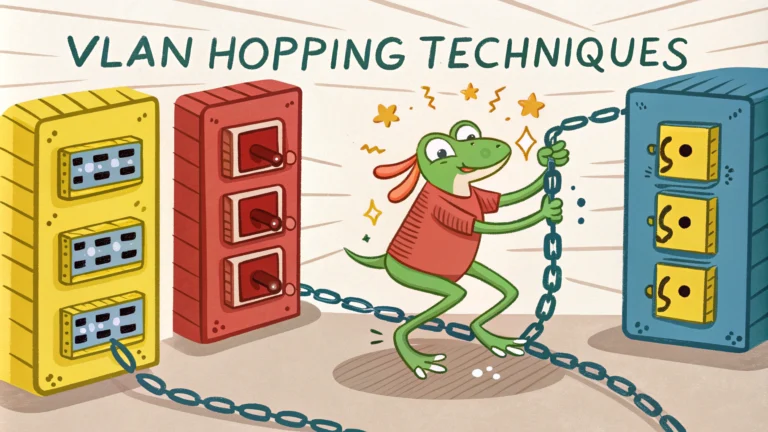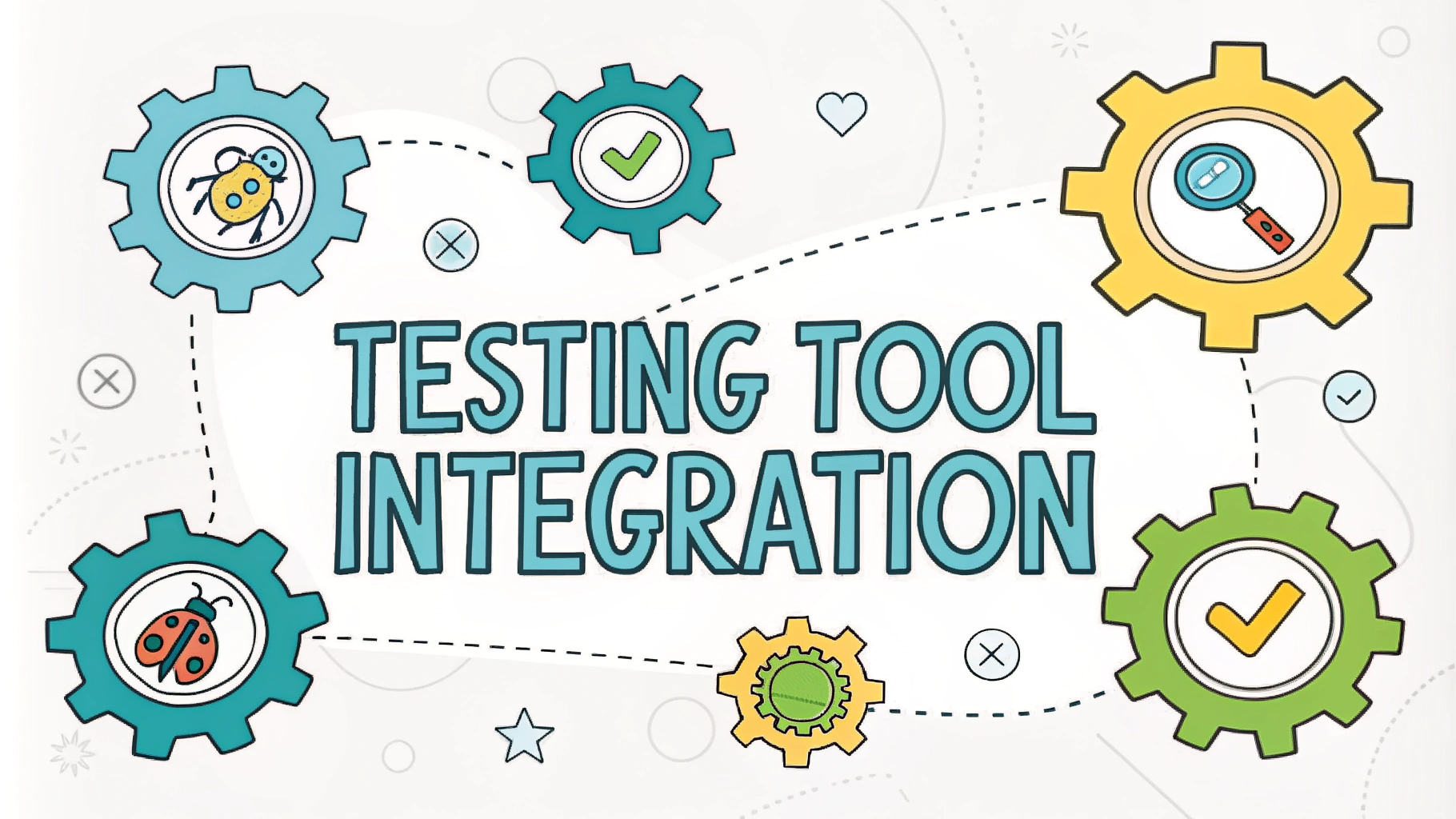VLAN hopping attacks allow attackers to bypass network segmentation by gaining unauthorized access to traffic on other VLANs.
What is VLAN Hopping?
VLAN hopping exploits weaknesses in VLAN implementations to access network traffic that should be isolated from the attacker’s network segment.
Common VLAN Hopping Methods:
1. Switch Spoofing
- Attacker’s device impersonates a switch
- Negotiates a trunk link with a legitimate switch
- Gains access to traffic from multiple VLANs
2. Double Tagging
- Attacker adds two 802.1Q tags to ethernet frames
- Outer tag gets stripped by first switch
- Inner tag allows frame to reach unauthorized VLAN
Prevention Methods
| Method | Implementation |
|---|---|
| Disable DTP | Set switchports to access mode or explicit trunk mode |
| VLAN Access Control | Restrict VLAN trunk permissions to necessary VLANs only |
| Native VLAN Security | Use separate VLAN IDs for native and user VLANs |
Detection Tools
- Yersinia – Tests for VLAN hopping vulnerabilities
- Wireshark – Monitors suspicious VLAN traffic
- Cisco IOS Security Features – Built-in VLAN security monitoring
Best Practices
- Configure ports explicitly as access or trunk
- Use private VLANs where possible
- Implement port security measures
- Monitor for unauthorized DTP negotiation
- Regular security audits of VLAN configurations
Testing Steps
When conducting authorized VLAN hopping tests:
- Document current VLAN configuration
- Test for DTP vulnerabilities
- Attempt double tagging attacks
- Verify trunk port security
- Check native VLAN configuration
Resources:
- Cisco Security Advisory: Switch Security Best Practices
- IEEE 802.1Q Standard: VLAN Specifications
Always obtain proper authorization before testing VLAN security in any network environment.
Impact of VLAN Hopping
VLAN hopping attacks can lead to serious security breaches including:
- Data theft from protected network segments
- Man-in-the-middle attacks across VLANs
- Denial of service on targeted VLANs
- Access to management and control traffic
Advanced Protection Strategies
- Implement 802.1x authentication
- Deploy VLAN ACLs (VACLs)
- Use MAC-based VLAN assignment
- Enable BPDU guard on access ports
- Configure storm control
Incident Response
- Isolate affected switches
- Document unauthorized VLAN access
- Review switch configurations
- Update security policies
- Implement additional monitoring
Conclusion
VLAN hopping remains a significant threat to network segmentation security. Successful mitigation requires:
- Proper switch configuration and hardening
- Regular security assessments
- Monitoring for suspicious VLAN activity
- Implementation of defense-in-depth strategies
- Ongoing security awareness and training
Network administrators must stay current with emerging VLAN security threats and regularly update protection measures to maintain effective network segmentation.
FAQs
- What is VLAN hopping and why is it a security concern?
VLAN hopping is a network attack where an attacker gains access to traffic on other VLANs that would normally be inaccessible. It’s concerning because it bypasses VLAN segmentation security, potentially exposing sensitive network traffic. - What are the two main types of VLAN hopping attacks?
The two main types are switch spoofing and double tagging. Switch spoofing involves an attacker configuring their device to negotiate a trunk link, while double tagging exploits 802.1Q VLAN tagging by adding an additional VLAN tag to frames. - How does switch spoofing work in VLAN hopping?
Switch spoofing occurs when an attacker configures their device to negotiate a trunk link by emulating a switch through Dynamic Trunking Protocol (DTP). Once established, they can access traffic from multiple VLANs. - What is double tagging and how is it executed?
Double tagging involves adding two 802.1Q tags to a frame. The outer tag is stripped by the first switch, leaving the inner tag intact, allowing the frame to be forwarded to a VLAN that should be inaccessible to the attacker. - What are the prerequisites for a successful double tagging attack?
The native VLAN of the trunk port must be different from the access port’s VLAN, the attacker must be aware of the native VLAN ID, and the target switch must use 802.1Q trunking. - How can organizations prevent VLAN hopping attacks?
Organizations should disable DTP, use static access ports, disable unused ports, properly configure native VLANs, implement private VLANs where appropriate, and use port security features. - What role does native VLAN misconfiguration play in VLAN hopping?
Native VLAN misconfiguration can facilitate double tagging attacks because frames with tags matching the native VLAN are processed without tags, potentially allowing attackers to manipulate frame forwarding. - Why is DTP particularly vulnerable to VLAN hopping attacks?
DTP is vulnerable because it automatically negotiates trunk links, which can be exploited by attackers to establish unauthorized trunk connections, giving them access to multiple VLANs. - What tools are commonly used to test for VLAN hopping vulnerabilities?
Common tools include Yersinia, Scapy, and custom scripts that can craft specially formatted packets for both switch spoofing and double tagging attacks. - How effective is VLAN hopping in modern network environments?
VLAN hopping effectiveness has decreased in modern networks due to improved security features and awareness, but it remains a viable threat in networks with legacy equipment or misconfigured switches.







